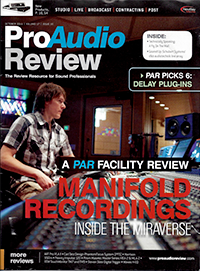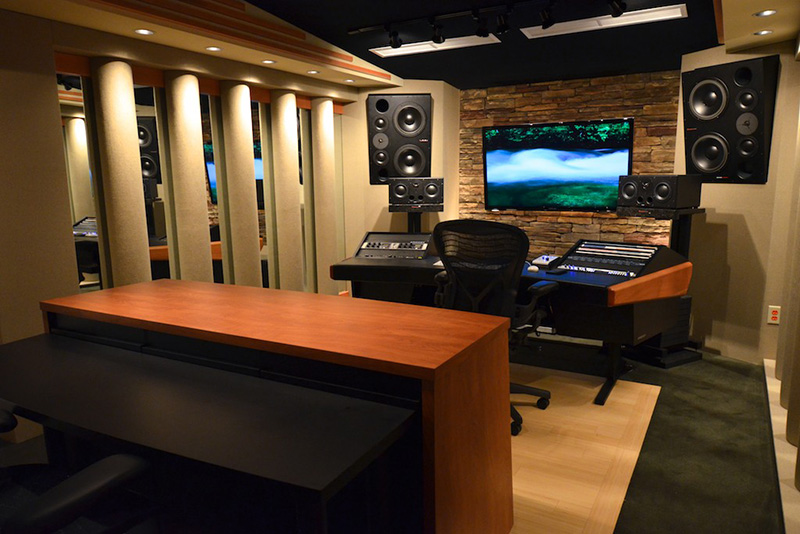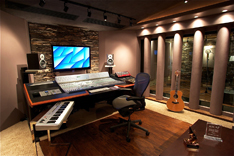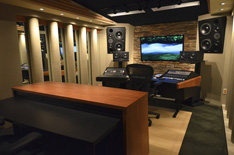
PAR Magazine, Oct 2011
Carl Tatz Design PhantomFocus™ System Monitor Optimization System (PFS™) PFS™ allows your speakers to sound how they are supposed to sound if your room “wasn’t being so destructive,” offers Tatz. Here, PAR’s senior contributor enthusiastically confirms this claim. Ten years ago, if you heard Carl Tatz’s name mentioned, it was likely in regards to Recording Arts – the world-class Nashville studio he owned and operated for nearly 20 years, I did the 5.1 mix of Allison Moorer’s concert DVD there in 2003, and I fell in love with the place. Unfortunately, it was only weeks before the studio changed hands and it became a private facility, so I was never fortunate enough to work there again. It was during his Recording Arts tenure that Tatz began to develop the critically acclaimed Phantom Focus System [PFS J _ “Having been a studio owner, engineer and producer for 18 years at Recording Arts, I gradually was pushed away from the console as more engineers booked the studio,” recalls Tall. “I always had a passion for speakers, and this gave me the time to tweak the monitoring. I needed something to match the ‘wow’ of the new-at-the-time SSL G+; I installed Dynaudio M3s after considering several other choices. As great as those speakers are, it became obvious that the room had an obvious effect on their performance. So I became obsessed with making them sound the way I wanted them to, and this was the beginning of my research.” Today, the Phantom Focus System is a household name in the Nashville audio community, and its popularity is rapidly growing worldwide. The private studios of Rascal Flatts, Kyle Lehning, Andy Dodd and Adam Watts, John Willis and Bob Bullock feature Phantom Focus Systems, as does The Grand Old Opry’s broadcast studio, World Wrestling Entertainment (WWE). and The Ryman Auditorium’s control room. Tatz incorporates Phantom Focus Systems into all of his room designs while frequently implementing it into existing rooms where the owners are seeking improved accuracy in their monitoring. Features The Phantom Focus System is Tatz’s studio monitoring tuning protocol “that provides world-class monitoring in virtually any room.” The PFS provides accurate monitoring from 20 Hz to 20 kHz and can be adapted to the client’s monitor of choice. The trademarked PFS tuning process utilizes a combination of hardware, software and proprietary protocols to allow studios to attain a high level of monitoring accuracy. This implementation protocol is comprised of nearly 50 steps that include phase and laser alignment; damping; isolation mounts; careful assessment of engineer/speaker placement relative to their room’s primary axial modes; proprietary speaker distance and angle and digital processing crossover points for pass filtering; and finally, parametric equalization. The hardware implementation typically includes monitor stands, concrete, Sorbothane and other isolation materials, custom floating plenum mounts, a dual subwoofer system and digital processing. Including Rational Acoustics’ Smaart software, five different software packages are utilized throughout the process and the entire evaluation and implementation process requires a minimum of two days. Traditional studio designs have included equalization on the main monitors to improve their performance, but typically not on nearfield monitors. The PFS studio allows a studio with only nearfields to provide the frequency response of a large studio with mains. Tatz explains, “The PFS used in a nearfield setup creates something unique: nearfields as mains. In other words, they are not nearfields anymore; they now have the low-end frequency response of mains with the intimacy of near fields – the perfect marriage.” In Use Tatz spent the better part of a day with PAR editorial director Frank Wells and I, visiting three different PFS-equipped rooms around Music City – Yes Master, Red Decibel East and The Blue Grotto. This was not to just listen to a song or two, but to actually spend time with material we know intimately, inside and out. Based on what I experienced, the downside is that PFS rooms have a smaller sweet spot than most studios; once you get out of the sweet spot, monitoring accuracy rapidly decreases. But the upside is that if you are in the sweet spot, you are likely going to hear more accurately than you’ve ever heard before. This is no exaggeration. Tatz describes this as “pinpoint imaging in an almost holographic sweet spot,” and I have to agree. Also impressive was that even though Yes Master is equipped with Lipinski L-707 monitors; Red Decibel East with Adam S3X-H monitors; and The Blue Grotto with Dynaudio M3 and Dynaudio M 1 monitors in a Dual PFS; the sound in all three rooms, to my ears, was nearly identical. Even with extended listening, I can’t truly form a strong opinion about a room without actually mixing in it, to envision how well my mixes translate in the real world. So, when Tatz offered me a couple of days in The Blue Grotto to truly form my opinion of PFS, I couldn’t pass it up. I hauled a Pro Tools HD rig to the studio to ensure that I would be able to tweak my mixes later in my own room if there were any sonic issues that I overlooked while mixing in a room where I was unfamiliar. During my first day, I mixed an instrumental tune for an upcoming release from bass virtuoso Adam Nitti (adamnitti.com). As I find typical for my first day mixing in a new studio, I was not completely confident with what I was hearing, although I was loving the way the mix sounded in the room. The first element to catch my ear was the low-frequency clarity. In comparison to other rooms, when adjusting the lower frequencies (250 Hz) of an equalizer, it was much easier to locate the precise frequency that I wanted to boost or cut and small adjustments (0.5 dB) were surprisingly audible. Next was the true test: taking the mix back to familiar ground, my own studio. My room is far from perfect, but after nearly two decades of use, it is a room I know inside and out. And upon listening to The Blue Grotto mix, I was stunned. For the first time in my career, I took the first mix from another studio back to my room and had no surprises at all. The next day I had equally pleasing results, but this time I was able to work at a much faster speed; I had no reservations that what I was hearing was truly what I was getting. Summary Tatz sums it up best: “Part of what PFS does is make the speakers sound the way the speakers are supposed to sound if the room wasn’t being so destructive. And I mean any room – my design or anyone else’s – and that is just for the frequency response. Phantom Focus imaging is an entire landscape unto itself; the monitors just disappear.” Whether you are building a studio from the ground up or you need to improve the workspace you are already utilizing, the PhantomFocus™ System should be a top consideration.Price: PDA [priced upon application] Contact: Carl Tatz Design (carltatzdesign.com)




